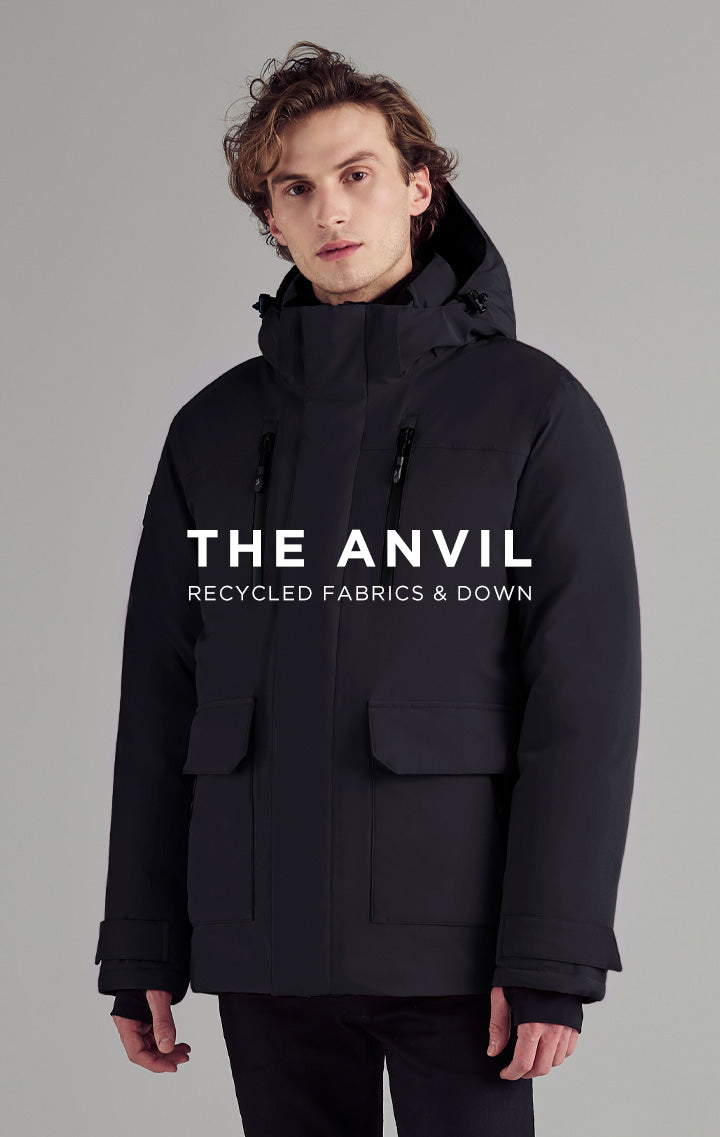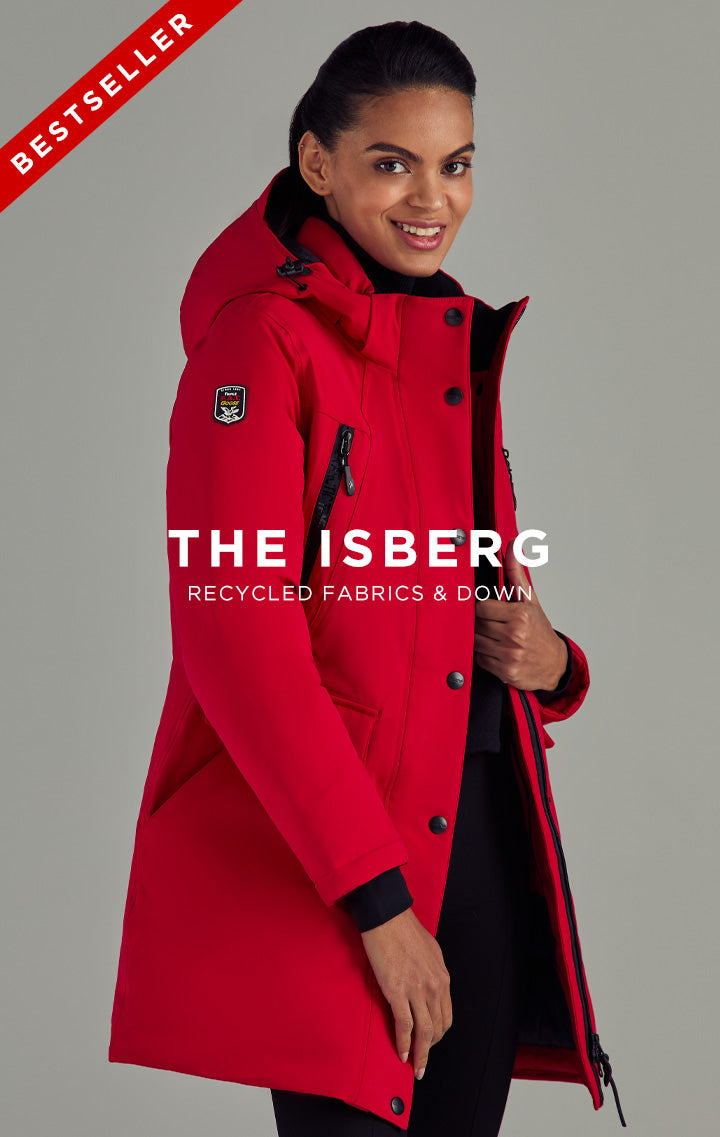This post was created by Triple F.A.T. Goose, an outerwear brand that Travel and Leisure magazine named as a top pick and said, "This is the best goose down winter coat I’ve ever worn" when describing Triple F.A.T. Goose down coats.
If you ask someone who has spent some time in a very cold environment what they wore to stay warm, there is a very good chance that they’ll all give you the same answer. Sure, they might mention the layering system that they used to regulate their temperature and stay dry, but they’re also likely to tell you that their most important layer was the jacket that they wore. If you press for further details, there is a very good chance you’ll discover that the jacket was a down parka of some type and without it, they would have been much more uncomfortable. But what exactly is a down parka? As it turns out, it’s an essential piece of apparel that was specifically created to keep us warm in some of the coldest places on the planet. More intriguing still, these garments have a history that actually dates back hundreds of years.
What is a Parka
By the most basic of definitions, a parka is a long coat that comes with a fur-lined hood. Typically, a parka reaches well below the waist, providing coverage for the wearer’s upper thighs and rear end, offering greater warmth as a result.
The original design for the parka can be traced back to the Caribou Inuit of Northern Canada. Living in the harsh cold of the Arctic, the Inuit developed ways to stay warm while hunting and kayaking in extreme conditions. Early on, they simply used layers of animal fur and skins to protect them from the elements, but as time passed their clothing became more sophisticated and efficient, evolving into what we now recognize as a parka.
The term “parka” comes from the language of the Nenets, a hardy group of people who inhabit Northern west Russia and the Aleutian Islands in Alaska. For them, the word simply means “animal skins” in a very generic sense, although in this case, it references the caribou and seal skins used to create their outer layers. The fur from those animals had the added benefit of being naturally waterproof, which proved invaluable in the rain and snow.
On occasion, you may see a parka referred to as an anorak, although technically these are two very different types of jackets. While a parka tends to have a front opening that allows the wearer to slip it on, an anorak is a pull-over coat instead. A parka also tends to be longer and includes down or synthetic insulation, while an anorak stops at the waist and features little to no insulation. Either jacket can be waterproof as well.

As the parka continued to evolve over time, it has now become a sophisticated and thoroughly modern piece of apparel. Today, parkas have done away with animal skins in favor of highly technical fabrics that are warmer, lighter, and more water-resistant than ever before. Additionally, they have adopted the use of goose and duck down to provide even more protection from cold temperatures, without adding bulk or weight.
Our men's Huron, Chenega II, and Eberly II parkas are all perfect examples of how modern materials combine with traditional design to form some of the best parkas ever created.
What are the Different Types of Parkas?
Even though the term “parka” defines an entire style of jacket, there are actually several types of parkas that make up this category of outerwear. These are some of the most common styles.
Fishtail Parka
After World War II, the U.S. military knew that it needed to create warmer gear for its soldiers and set about developing new designs to keep the men more comfortable in the field. One of those designs was the Fishtail Parka, which was developed in the late-1940s and was later used extensively in the Korean War. While it did feature a rather unique design, the fishtail approach never really caught on in consumer models.
This jacket derives its name from the unique “tail” that extended down the back of the parka, providing extra coverage to the posterior while both standing and sitting. That same tail could also be pulled between the legs and snapped into place along the front of the jacket too, adding yet more warmth in places where it was needed most. When a soldier was ready to move, the fishtail could be unsnapped and folded out of the way, keeping it from inhabiting motion.
Learn more about Triple F.A.T. Goose, a brand with a 35 year history that has been featured in Outside, Esquire, Vogue, Elle, Men's Journal, Cosmopolitan, Robb Report, and more. All Triple F.A.T. Goose coats have a fill power rating of 675 and up. Shop the collection.
SHOP TRIPLE F.A.T. GOOSE
Snorkel Parka
The military continued pursuing new parka designs throughout the 1950s, which is when it added the so-called snorkel parka to its inventory. This model was made almost exclusively for flight crews who were maintaining aircraft in arctic conditions where temperatures routinely fell to -60ºF or lower. Those personnel often found themselves outside for extended periods of time, which proved dangerous due to the extreme cold.
This jacket featured a 3/4 length design that maximized coverage for increased warmth. It also had a distinctive hood that could be zippered shut to the point that only a small tunnel—often referred to as the “snorkel—was open to the outside. This further enhanced the parka’s ability to keep the wearer warm, creating a cocoon-like environment for the person inside. But the hood was so effective at its job that it also greatly limited what they could see and hear as well.
Cagoule
The cagoule style of parka came along in the 1960s, with a designer by the name of Noel Bibby—who founded a British outdoor brand called Peter Storm—getting credited for its invention. What sets this jacket apart from most other parkas is that it usually didn’t come with a liner of any kind. This made it thinner and lighter than a traditional parka, although it also wasn’t nearly as warm as other models either. One of the strongest features of this style of parka is its ability to roll up to a relatively small size. This made it a great option for frequent travelers looking to save space in their luggage or outdoor enthusiasts shaving weight from the backpacks. Bibby’s design came in both a traditional slip-on style as well as an anorak version, both of which were long enough to reach the knees.
Down Parka
The most common style of parkas these days is without a doubt the down parka. This type of coat takes its styling cues from the original Inuit version, complete with a fur-lined hood and an extended length. Unlike those original models, however, this modern parka uses technical fabrics, zippers, durable water repellent (DWR) treatments, and other materials to improve efficiency and weight.
As the name implies, these types of parkas also use goose or duck down as an insulator, increasing warmth substantially as a result. Down is amongst the lightest and warmest insulators in the world, although it does have one major flaw. If the feathers get wet, they lose their loft, which in turn eliminates their ability to keep the wearer warm. In the past, this was a major problem. However, with advancement in technology, waterproof down parkas are available.
Additionally, many down jackets now use an array of construction methods to improve their performance in the rain and snow too. For instance, in addition to using a DWR coating, they’ll also incorporate water-repellant zippers, waterproof fabrics, and several types of seam sealing techniques to prevent moisture from ever reaching the interior of the jacket. This results in better all-around performance, even from a jacket that doesn’t use waterproof down.
Our men's Huron and women's Ellaria parkas are great examples of fully-waterproof models, while the Rockland and Colburn parkas are rated as water-resistant. To better understand the difference between waterproof, water-resistant, and water-repellant, check out our primer on that topic here.

What are the Benefits of Wearing a Down Parka
The most obvious reason for wearing a down parka is that this type of jacket will keep you warm, even in extremely cold conditions. Additionally, parkas have always had an outstanding weight-to-warmth ratio, which translates to better performance without undue bulk. In fact, a good down jacket with a high fill power rating can often serve as the only warm layer you need to stay comfortable outdoors in the winter. And since these parkas are lightweight, they don’t tend to inhibit motion either.
Beyond those obvious benefits, there are a number of other reasons why having a down parka in your closet makes a lot of sense. For example, these coats are highly compressible, stuffing down to a relatively small size in a suitcase or backpack. This makes them a great travel companion for anyone visiting cold-weather destinations. Down parkas are also very durable, with the ability to withstand years of regular use without the need to replace them after a season or two. They also come in a wide variety of styles, colors, and materials, which means no matter what your personal fashion sense is, there is probably a down jacket that will meet your needs.
As if that wasn’t enough, down parkas are extremely comfortable to wear. After all, they’re made from many of the same materials used in making the comforters that go on our beds. And since down is a natural insulator, it is fully biodegradable too, making it much better for the planet when compared to synthetic options.
For more information on what to look for in a down Parka, check out our top 5 things to consider before buying a parka article.
Triple F.A.T. Goose is America's original luxury urban outdoors brand. Since 1987, we have produced men's and women's parkas, down puffers, and shell jackets for consumers around the world. Our products are available exclusively online with free shipping and free returns.





